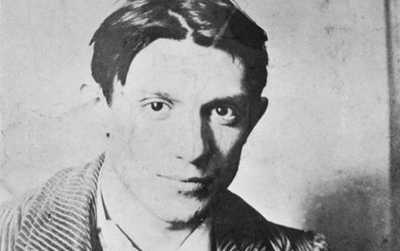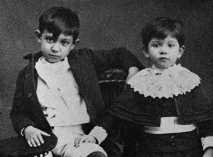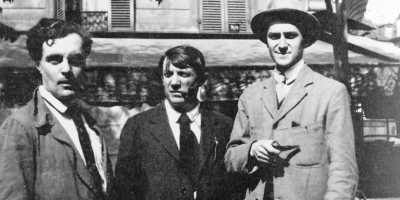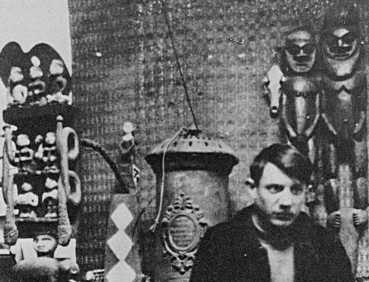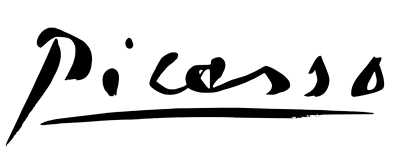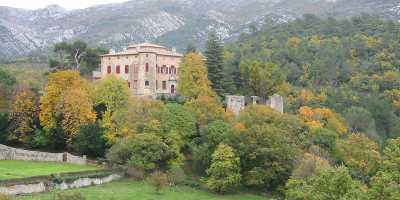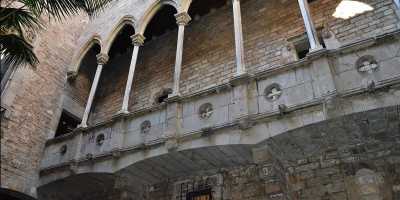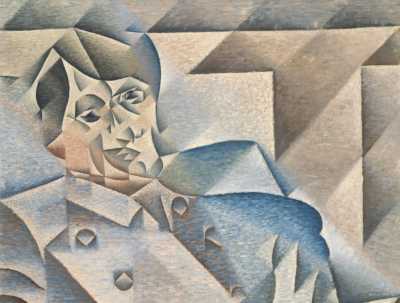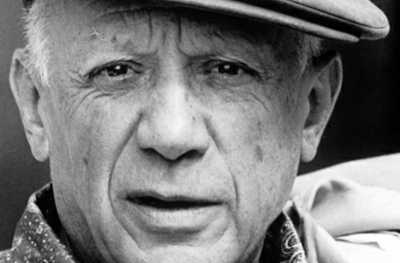 Pablo Picasso in 1962 Argentina. Revista Vea y Lea, Public domain, via Wikimedia Commons
Pablo Picasso in 1962 Argentina. Revista Vea y Lea, Public domain, via Wikimedia Commons
Top 10 questions about Pablo Picasso
As the art world marks the 50th anniversary of Pablo Picasso's death this week, it is a fitting time to explore the life and work of one of the most influential artists of the 20th century. In this article we will delve into the top 10 questions about Pablo Picasso, from his personal life to his artistic achievements, in order to gain a better understanding of this iconic figure. Join us on this journey to discover the man behind the masterpieces.
Table of contents
- Who was Pablo Picasso and what did he do?
- When and where was Pablo Picasso born?
- What is the most important thing about Pablo Picasso?
- How many artworks did Picasso create?
- What type of art did Picasso paint?
- What was Picasso's first and last artwork?
- How did Pablo Picasso die and how old was he at the time?
- Where are Picasso's most important works located?
- What is Picasso's full name?
- What are the most interesting facts about Picasso?
-
Who was Pablo Picasso and what did he do?
Pablo Picasso was a famous Spanish artist who was born in Malaga in 1881. He is widely regarded as one of the greatest artists of the 20th century and is known for his pioneering work in a variety of different artistic mediums.
 Ricard Canals i Llambí, Public domain, via Wikimedia Commons
Ricard Canals i Llambí, Public domain, via Wikimedia Commons -
As a painter, Picasso was known for his diverse range of styles, from the Blue Period and the Rose Period to Cubism and Surrealism.
-
As a sculptor, he created innovative and groundbreaking works that challenged traditional notions of form and space.
-
As a printmaker, he produced a large number of etchings and lithographs that are highly sought after by collectors and art enthusiasts.
-
As a ceramicist, he experimented with different techniques and forms, and created a large number of unique and highly prized works in this medium.
-
-
When and where was Pablo Picasso born?
Pablo Picasso was born on October 25, 1881, in the city of Malaga, in the southern region of Andalusia, Spain.
 Pablo Picasso with his sister Lola. AnonymousUnknown author
Pablo Picasso with his sister Lola. AnonymousUnknown author-
Pablo Picasso was the first child of Don José Ruiz y Blasco and María Picasso y López, both of whom were artists themselves. Picasso's father taught drawing at a local school, and would often take his son with him to work.
-
As a child, Picasso showed a natural talent for drawing and painting. He was reportedly able to draw before he could even speak, and by the age of 13 he had surpassed his father in artistic skill.
-
Picasso's family was relatively affluent, and he enjoyed a comfortable upbringing. He was exposed to a wide range of art and culture from an early age, and was encouraged to pursue his artistic passions.
-
Despite his privileged background, Picasso was deeply affected by the poverty and suffering he saw around him in Malaga. Many of his early works depict scenes of street life and social injustice.
-
One of Picasso's most famous paintings from his early years in Malaga is "La Vie" (1903), which shows Picasso and his lover at the time, Fernande Olivier, embracing in a small room. The painting is widely regarded as a masterpiece of the Blue Period, which is characterized by its somber, melancholy tone.
-
Another notable work from Picasso's Malaga years is "The Soup" (1902), which shows a group of impoverished people gathered around a pot of soup. The painting is an early example of Picasso's interest in social realism and his concern for the plight of the poor.
-
Picasso's family moved to Barcelona in 1895, when he was 14 years old. However, the artist continued to draw inspiration from his early years in Malaga throughout his career, and often returned to Andalusia in search of new ideas and artistic inspiration.
-
-
What is the most important thing about Pablo Picasso?
Picasso's most important contribution to modern art was his role in the development of cubism, which revolutionized painting and sculpture.
 Modigliani, Picasso and André Salmon in front the Café de la Rotonde, Paris. Image taken by Jean Cocteau in Montparnasse, Paris in 1916. Amedeo Modigliani (1884–1920), Public domain, via Wikimedia Commons
Modigliani, Picasso and André Salmon in front the Café de la Rotonde, Paris. Image taken by Jean Cocteau in Montparnasse, Paris in 1916. Amedeo Modigliani (1884–1920), Public domain, via Wikimedia Commons-
Picasso is widely regarded as one of the most important artists of the 20th century, and his contributions to the development of modern art are immeasurable.
-
One of Picasso's most significant contributions to modern art was his role in the development of the Cubist movement. Along with Georges Braque, Picasso pioneered a revolutionary new style of art that broke down objects and figures into geometric shapes and planes.
-
Picasso's interest in African and Oceanic art was also highly influential in the development of modern art. He was deeply inspired by the bold and abstract designs and non-representational forms found in these artistic traditions, and incorporated them into his own work.
-
Throughout his career, Picasso experimented with a wide range of mediums and styles, including sculpture, printmaking, and ceramics. He was a true innovator and constantly pushed the boundaries of what was considered acceptable in the art world.
-
Picasso's legacy continues to influence contemporary art, and his works continue to be among the most highly valued and sought-after in the world. His innovative use of form, color, and texture continue to inspire artists to this day.
-
-
How many artworks did Picasso create?
Picasso created an estimated 50,000 artworks during his lifetime, including paintings, sculptures, prints, and ceramics.
 Pablo Picasso in his Montmartre studio,1908 Franck Gelett Burgess, Public domain, via Wikimedia Commons
Pablo Picasso in his Montmartre studio,1908 Franck Gelett Burgess, Public domain, via Wikimedia Commons-
Pablo Picasso was an incredibly prolific artist, and it is estimated that he created tens of thousands of artworks throughout his long career, including a vast number of paintings, drawings, prints, and sculptures.
-
Exact figures for the number of works Picasso created are difficult to pin down, as the artist was notoriously secretive about his output and often destroyed or discarded works that he was not happy with. Some estimates put the number of Picasso's artworks at over 50,000, while others suggest that the true number may be closer to 100,000.
-
Regardless of the exact number, it is clear that Picasso was a true artistic prodigy who created a staggering amount of work over the course of his lifetime.
-
Picasso's works continue to be highly sought-after by collectors and art lovers around the world, and many of his paintings and sculptures have sold for record-breaking prices at auction in recent years.
-
Despite his prolific output, Picasso remained dedicated to his art throughout his life, and continued to create new works until his death in 1973 at the age of 91.
-
-
What type of art did Picasso paint?
Picasso painted in many different styles throughout his career, but he is best known for his pioneering work in cubism, as well as his contributions to surrealism, neoclassicism, and expressionism.
 Picasso in front of his painting The Aficionado (Kunstmuseum Basel) at Villa les Clochettes, summer 1912. AnonymousUnknown author, Public domain, via Wikimedia Commons
Picasso in front of his painting The Aficionado (Kunstmuseum Basel) at Villa les Clochettes, summer 1912. AnonymousUnknown author, Public domain, via Wikimedia Commons-
Pablo Picasso was an incredibly versatile artist who worked in a wide variety of styles and mediums throughout his long career.
-
Early in his career, Picasso was heavily influenced by the classical traditions of painting and drawing, and created many works in a realistic, representational style.
-
As he grew older, Picasso began to experiment with a range of new styles and techniques, including Cubism, Surrealism, and Neo-Classicism.
-
One of Picasso's most famous periods was his Blue Period, which lasted from 1901 to 1904. During this time, he created a series of works featuring somber, monochromatic blue tones and melancholy subject matter.
-
Picasso's most revolutionary period was arguably his role as one of the founders of the Cubist movement. Along with Georges Braque, Picasso developed a new style of art that broke down objects and figures into geometric shapes and planes, and paved the way for many of the abstract art movements that followed in the 20th century.
-
Later in life Picasso continued to experiment with a range of styles and techniques, and created many works that reflected his interest in Surrealism and other avant-garde movements.
-
In addition to painting Picasso also worked extensively in sculpture, printmaking, and ceramics, and his works in these mediums are highly prized by collectors and museums around the world.
-
-
What was Picasso's first and last artwork?
 Pablo Picasso's Signature Pablo Picasso, Public domain, via Wikimedia Commons
Pablo Picasso's Signature Pablo Picasso, Public domain, via Wikimedia Commons-
Pablo Picasso began drawing and painting at a very young age, and it is difficult to pinpoint exactly what his very first artwork was. However, some of his earliest surviving works date back to when he was just nine years old, and include sketches of animals and other subjects.
-
As Picasso grew older he continued to refine his skills as an artist, and began to attract the attention of art collectors and dealers around the world.
-
It is difficult to determine what Picasso's very last artwork was, as he continued to create new works right up until his death in 1973. One of Picasso's final works was a large-scale painting titled "The Young Painter", which he completed in 1972, just a year before his death. The painting features a self-portrait of Picasso as a young man, and is considered to be one of his last great masterpieces.
-
Despite being in poor health in his later years, Picasso remained dedicated to his art and continued to create new works until the very end of his life.
-
-
How did Pablo Picasso die and how old was he at the time?
Pablo Picasso died on April 8, 1973, at the age of 91. The cause of his death was a heart attack, which occurred in Mougins, France, where he had lived for many years.
 Château of Vauvenargues Malost, CC BY-SA 3.0, via Wikimedia Commons
Château of Vauvenargues Malost, CC BY-SA 3.0, via Wikimedia Commons - His funeral was held at the Notre-Dame-de-Vie chapel in Mougins, France.
-
He was buried in the grounds of the castle at Vauvenargues, near Aix-en-Provence, which he had purchased in 1958 and where he spent much of his later life.
-
At the time of his death, Picasso was one of the wealthiest and most famous artists in the world, and his passing was widely mourned by the art community and the general public alike.
-
Despite his reputation as a difficult and sometimes controversial figure, Picasso was remembered fondly by those who knew him personally, and his legacy as a groundbreaking artist and innovator continues to be celebrated to this day.
-
Jacqueline Roque, Pablo Picasso's second wife, committed suicide by gunshot in 1986 at the age of 59, devastated and lonely after Picasso's death. The tragic event occurred in the villa they shared in Mougins, France.
-
Where are Picasso's most important works located?
Picasso's most important works are located in museums and galleries all over the world, including the Museo Picasso in Barcelona, the Museum of Modern Art in New York, and the Picasso Museum in Paris.
 The Picasso Museum in Barcelona MARIA ROSA FERRE ✿ from Vilafranca del penedes Catalunya, CC BY-SA 2.0, via Wikimedia Commons
The Picasso Museum in Barcelona MARIA ROSA FERRE ✿ from Vilafranca del penedes Catalunya, CC BY-SA 2.0, via Wikimedia Commons-
The Picasso Museum in Barcelona, Spain, which houses many of Picasso's early works, including his famous painting "Science and Charity."
-
The Musée Picasso in Paris, France, which contains one of the largest collections of Picasso's works in the world, with over 5,000 pieces, including paintings, drawings, and sculptures from throughout his career.
-
The Museum of Modern Art (MoMA) in New York City, which has a large collection of Picasso's works, including his famous painting "Les Demoiselles d'Avignon."
-
The Tate Modern in London, UK, which has an extensive collection of modern art, including many works by Picasso, such as his famous "Weeping Woman" painting.
-
The National Picasso Museum in Malaga, Spain, which is located in Picasso's birthplace and contains a large collection of his works, including paintings, drawings, and ceramics.
-
-
What is Picasso's full name?
Picasso's full name was Pablo Diego José Francisco de Paula Juan Nepomuceno María de los Remedios Cipriano de la Santísima Trinidad Ruiz y Picasso, according to his birth certificate.
 Picasso in 1908 AnonymousUnknown author, Public domain, via Wikimedia Commons
Picasso in 1908 AnonymousUnknown author, Public domain, via Wikimedia Commons- He was named after various family members, including his mother's father, José Ruiz Blasco, who was also a painter.
-
Picasso's last name, "Picasso", comes from his maternal grandmother, who was Italian.
-
He was baptized with even more names Pablo Diego José Francisco de Paula Juan Nepomuceno Crispín Cipriano de la Santísima Trinidad María de los Remedios Alarcón y Herrera Ruiz Picasso (23 words!), which was a common tradition in Spain and Latin America at the time, where children were often given a string of names to honor various family members and saints. The tradition has evolved over time, and today it is more common for children to have just a few names.
-
What are the most interesting facts about Picasso?
Did you know that Picasso's first word was 'pencil' and that he was mistaken for a stillborn when he was born? Beyond his impressive artistic legacy, there are many interesting facts and curiosities about the life of this legendary figure. Let's explore some of them!
 "Portrait of Picasso" by Juan Gris (1912) in the Cubist style. Juan Gris, Public domain, via Wikimedia Commons
"Portrait of Picasso" by Juan Gris (1912) in the Cubist style. Juan Gris, Public domain, via Wikimedia Commons-
Stillborn: Picasso was born on October 25, 1881, in Malaga, Spain. According to family legend, when he was born, the midwife thought he was stillborn until his uncle blew cigar smoke in his face, causing him to gasp for air.
-
Picasso's Love for Bullfight: Picasso was fascinated with bullfighting from a young age and became a regular spectator of the sport. He often incorporated bullfighting motifs in his artwork.
-
Was Picasso a bad student? Picasso was a gifted artist from a young age but struggled with his academics. He was expelled from several schools and once said, "I was always the best student in art class, but I never passed a single academic subject."
-
Picasso's first job: At the age of 13, Picasso's father secured him a job as a painter for a local theater company. He was paid 50 pesetas a month.
-
Did Picasso steal the Mona Lisa? In 1911, the Mona Lisa was stolen from the Louvre Museum in Paris. Picasso was questioned as a suspect but was later cleared of any involvement in the theft.
-
Cubism: Full of Little Cubes: In 1909, Picasso and Georges Braque developed a new style of art called Cubism, which used geometric shapes to depict objects. The style was characterized by the use of little cubes, hence the name.
-
Picasso's inspiration from Cézanne: Picasso was greatly inspired by French painter Paul Cézanne and once claimed that he was his one and only master.
-
Picasso & the Nazi officer: When a Nazi officer saw Picasso's painting "Guernica" during World War II and asked him, "Did you do this?", Picasso responded, "No, you did!"
-
Picasso's iconic striped shirt: Picasso was known for his eccentric style, which included his iconic striped shirt. He reportedly wore the shirt as a tribute to French sailor uniforms and was actually created by the famous designer Coco Chanel. Interestingly, the shirt features 21 horizontal stripes, each of which represents one of Napoleon's victories.
-
Picasso was a poet and a playwright: In addition to his artwork, Picasso was also a prolific writer and wrote poetry and plays throughout his life.
-
Pablo Picasso was a complex and fascinating artist whose influence on the art world continues to this day. From his unconventional artistic techniques to his colorful personal life there is no shortage of interesting facts and questions about this iconic figure. As we commemorate the 50th anniversary of his death, we invite you to keep exploring the world of Picasso and discover even more about this legendary artist.
Step into the world of Pablo Picasso through his own words: 10 famous quotes to inspire you
